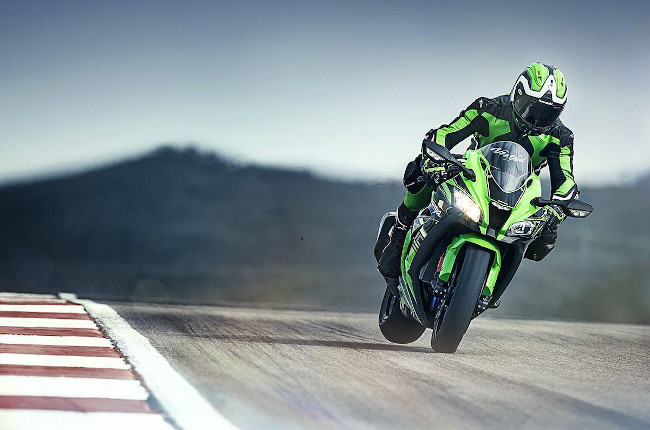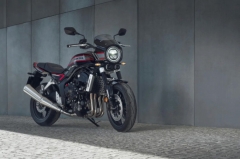
It’s interesting to think that hybrid cars like the Lexus CT 200h and the Toyota Prius have been around for many years now, yet no hybrid motorcycle currently exists in the market. One would think that manufacturers would have developed such technology for the two-wheeled world by now. However, as it would turn out, this just isn’t the case. Perhaps the concept of electrification was deemed the more viable option, as it’s a lot simpler and requires less maintenance than that of the good old internal combustion engine.
Whatever the case may be, Kawasaki is currently investing in developing hybrid technology for its future models. While all the details have yet to be revealed by the Japanese manufacturer, chances are that its new hybrid system will function similarly to that of its four-wheeled counterparts. So, how exactly does a hybrid setup work? Well, for starters, a high-powered battery mated to an electric motor can power the vehicle in low-speed environments such as around town, or while riding in the city. When speeds pick up, say you’re riding on the highway or on an open stretch of road, the electric motor would shut-off, and the vehicle would then be powered by its internal combustion engine.
It’s when riding on track and twisty roads that things can get pretty interesting, though. In spirited environments such as these, the electric motor and internal combustion engine can actually work together to provide the smoothest, fastest, and most efficient power delivery to the rear wheel. As many of you are probably aware, electric motors are known for their instant torque delivery—something that gasoline-powered multi-cylinder engines struggle to do. On top of this added performance benefit, a hybrid package can effectively eliminate range-anxiety, as in most setups, the gasoline engine can recharge the battery powering the electric motor.
Another benefit that Kawasaki’s hybrid setup could possibly provide would be significantly reduced weight. The sheer size and heft of batteries found on EVs usually results in motorcycles weighing a lot more than their gas-powered counterparts. Kawasaki’s hybrid system eliminates the need for large batteries and a large electric motor. For now, however, everything appears to be in the planning phase, with an actual prototype yet to be unveiled by Kawasaki. Nonetheless, it’s exciting to think that a sophisticated hybrid setup could eventually power the likes of the Kawasaki Ninja 400, or commuter-spec naked bikes like the Kawasaki Z range of bikes.
Tagged Under
Related Articles
-
Have you seen the 2024 Honda CBR500R? / News
Honda has just launched the 2024 CBR500R, a beginner-friendly sportbike with design inspirations from the CBR1000RR.
-
Kawasaki Ninja 7 unveiled as Team Green's first hybrid-electric model / News
Kawasaki has entered the hybrid market with the launch of the Ninja 7, a sportbike powered by both a parallel-twin engine and an electric motor.
-
CFMOTO unveils the all-new 450CL-C cruiser in China / News
CFMOTO has pulled the covers off the 450CL-C in the Chinese market, marking its entrance into the popular entry-level cruiser segment.
-
CFMOTO 450 NK now in the Philippines at P262,800 / News
CFMOTO has pulled the covers off the new 450 NK in the Philippines at a price tag of just P262,800.
-
Moto Morini gives a glimpse of its future V-twin-powered models / News
Moto Morini is reportedly working on a wide spread of models powered by V-twin engines, according to multiple international publications.
Latest News
-
Take a look at the new Honda CB1000F / News
Honda has revealed the production-spec CB1000F, blending retro style with Hornet-based performance and modern tech. Expected to hit UK showrooms in early 2026.
-
Ducati launches all-new Hypermotard V2 with cutting-edge tech / News
The Hypermotard V2 keeps its aggressive stance and signature beak while bringing sharper design and modern electronics.
-
2026 Kawasaki Z650 S gets more aggressive styling and premium tech / News
The 2026 Kawasaki Z650 S adds new styling, updated tech, and the same dependable 649cc engine loved by middleweight riders worldwide.









